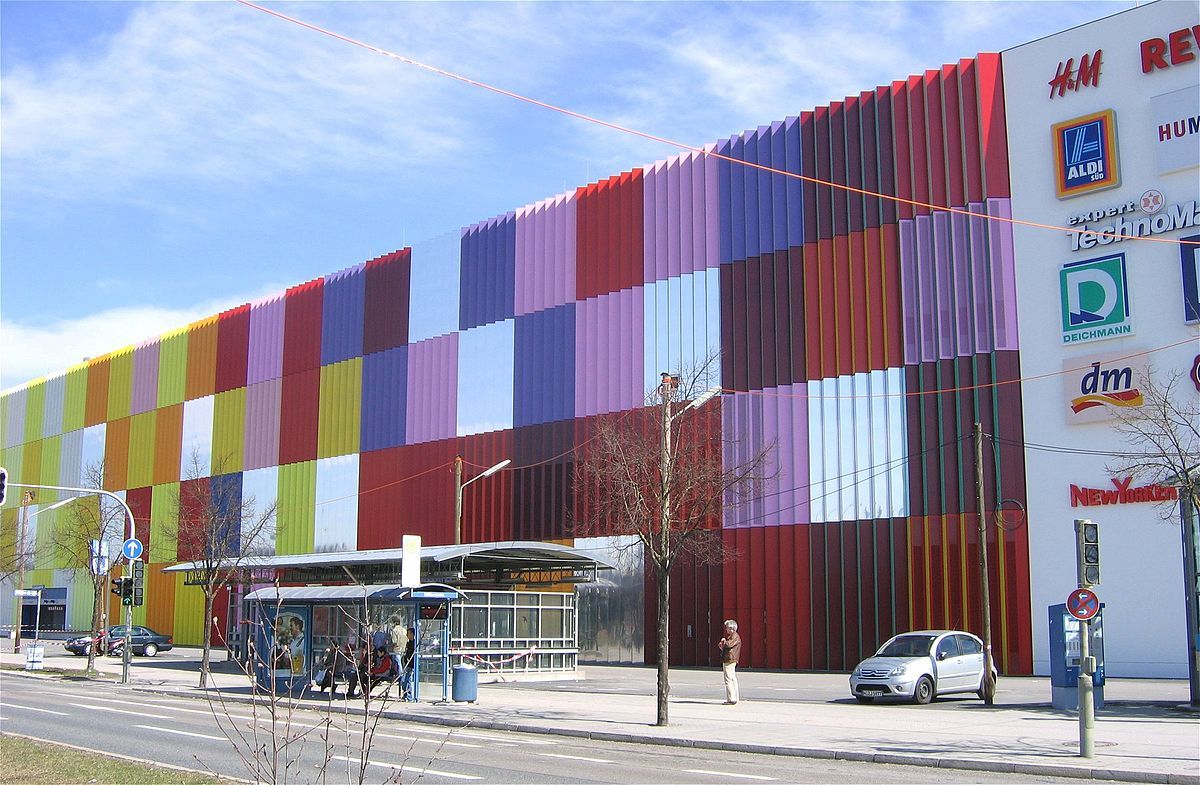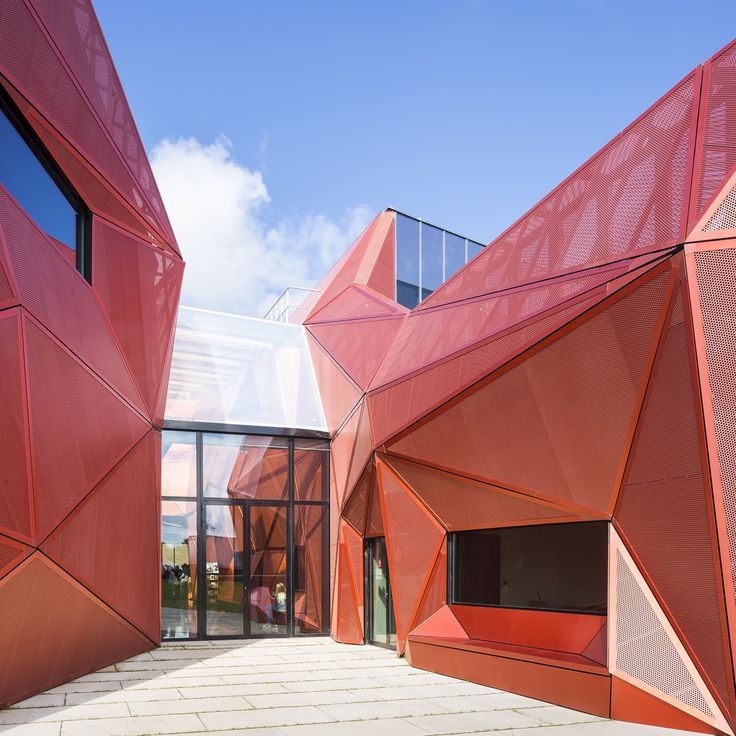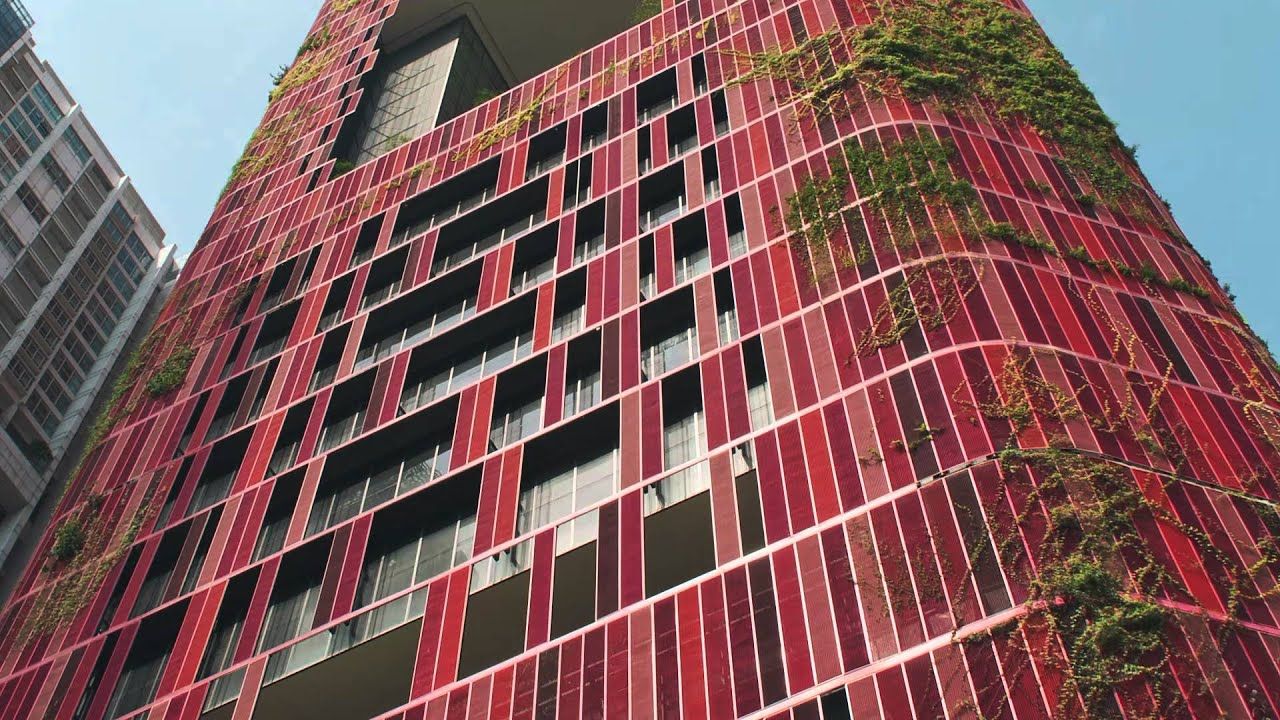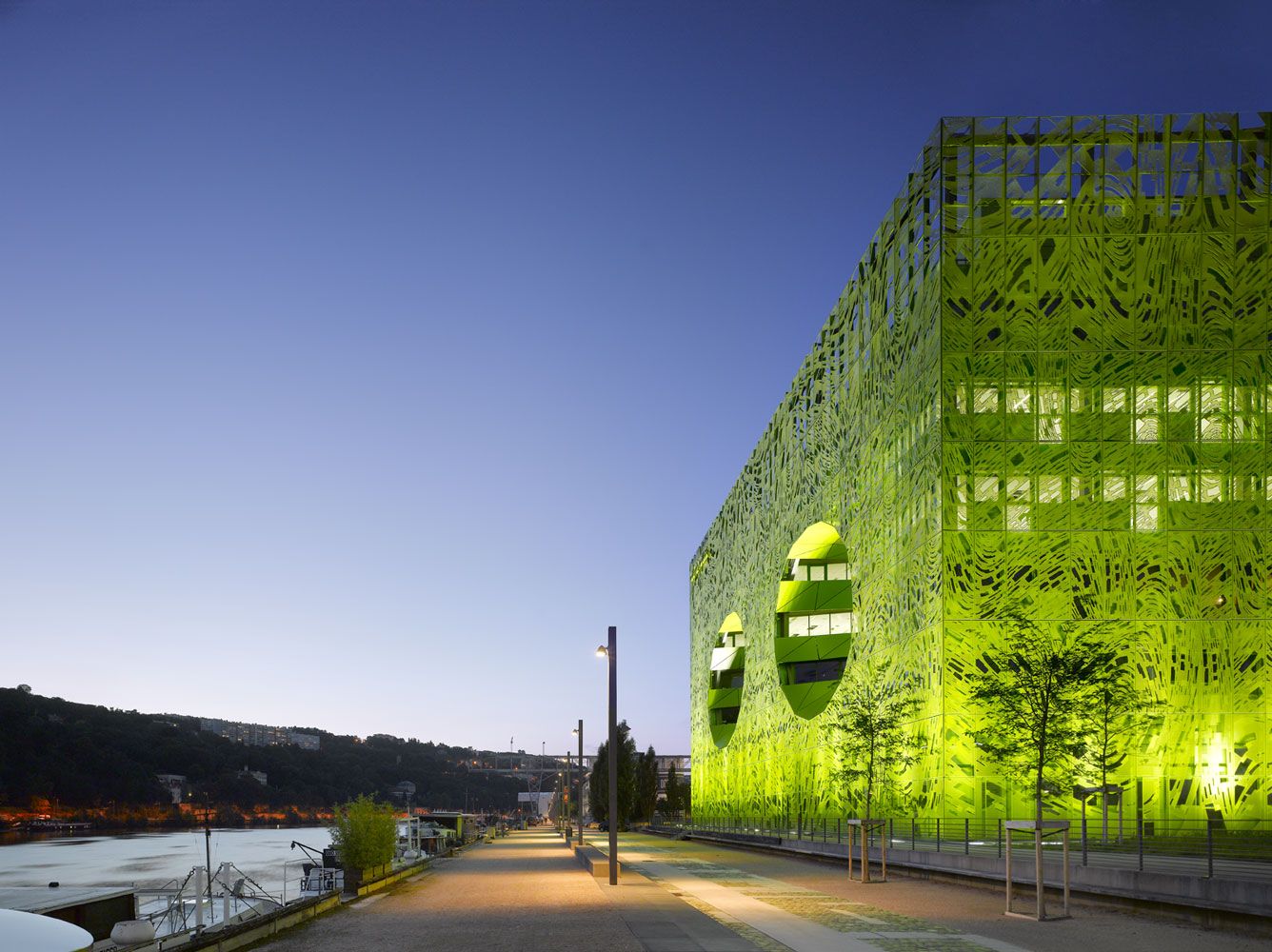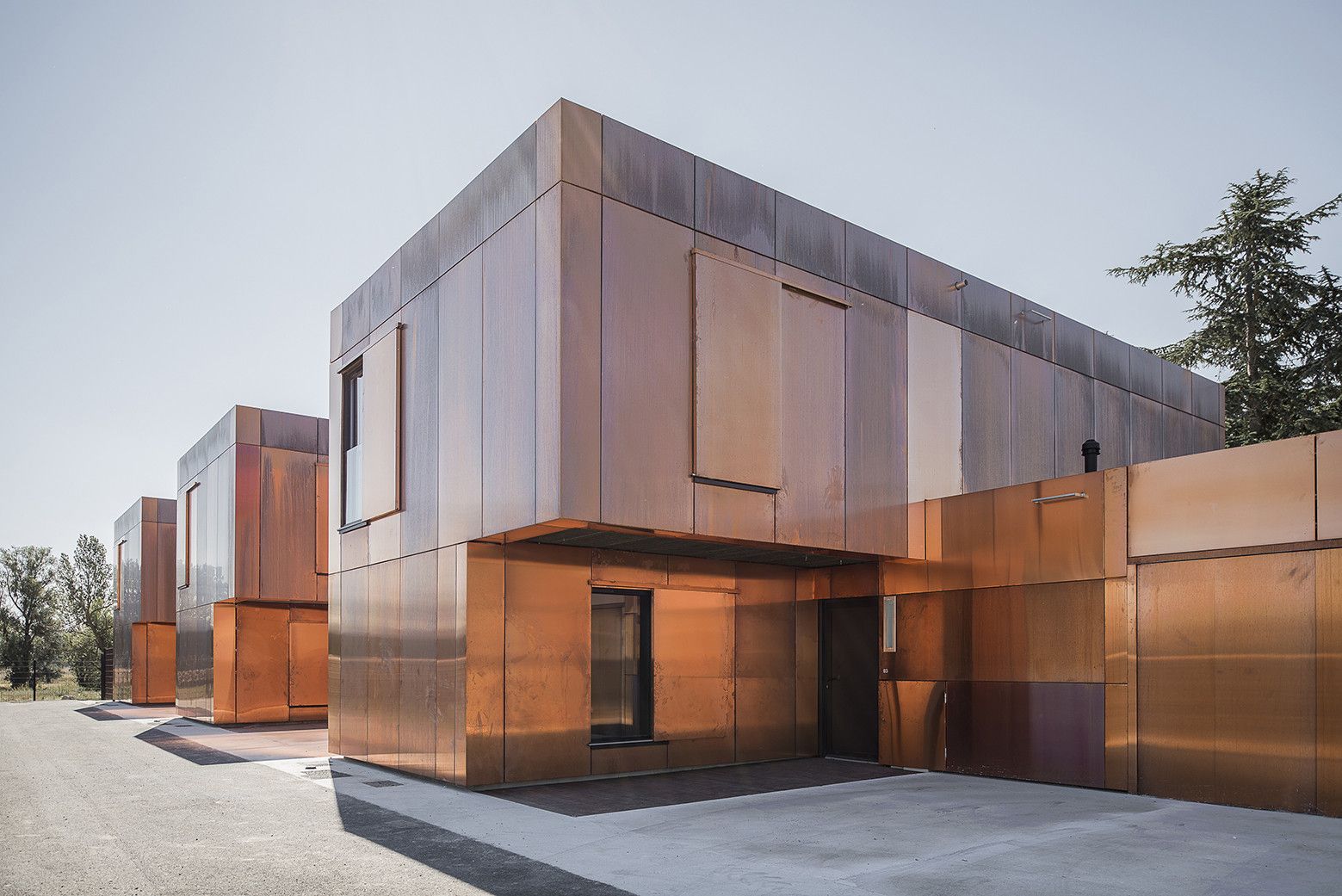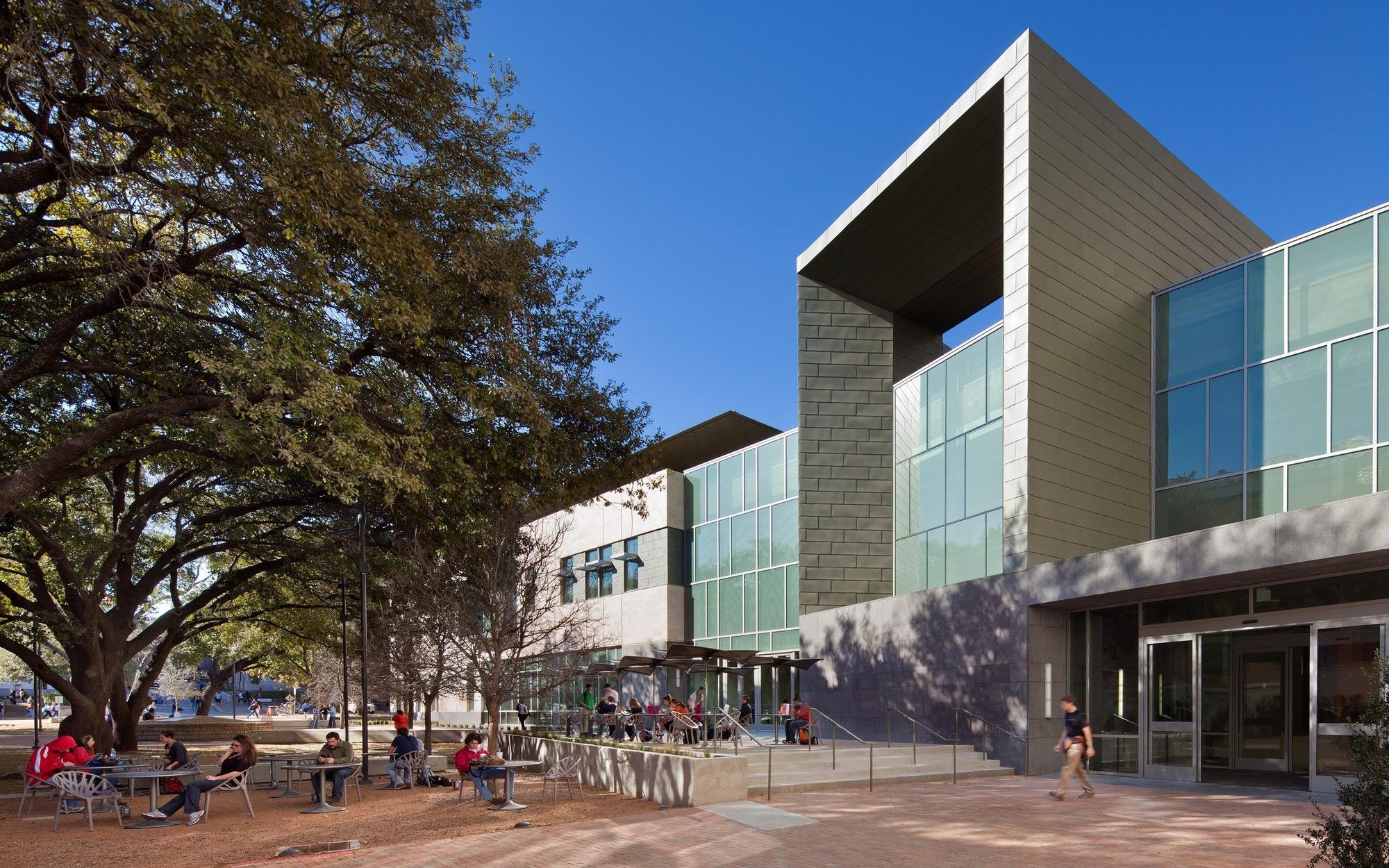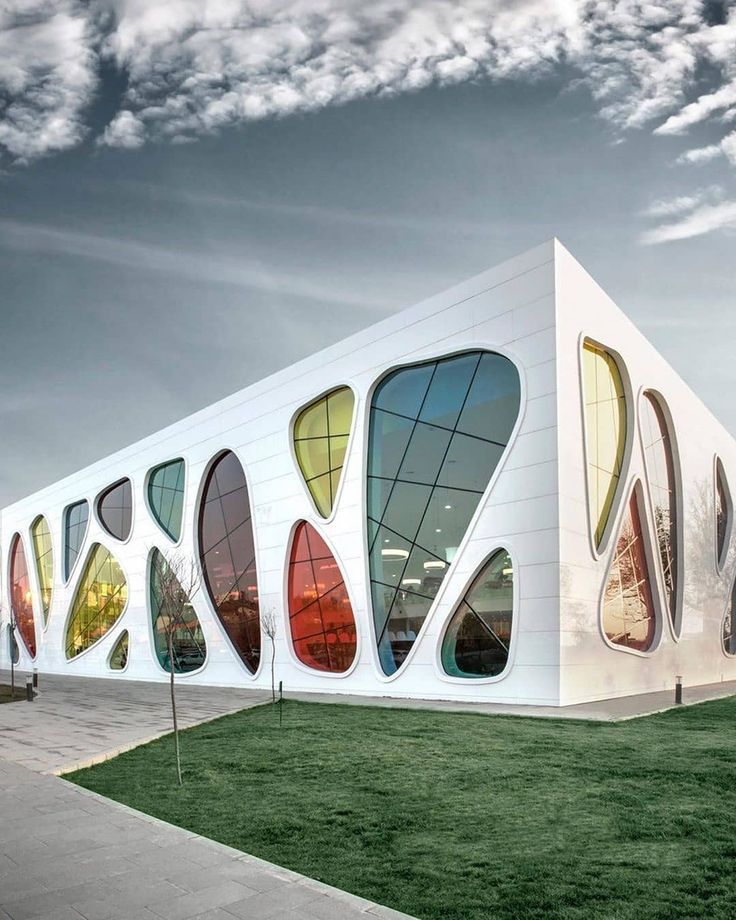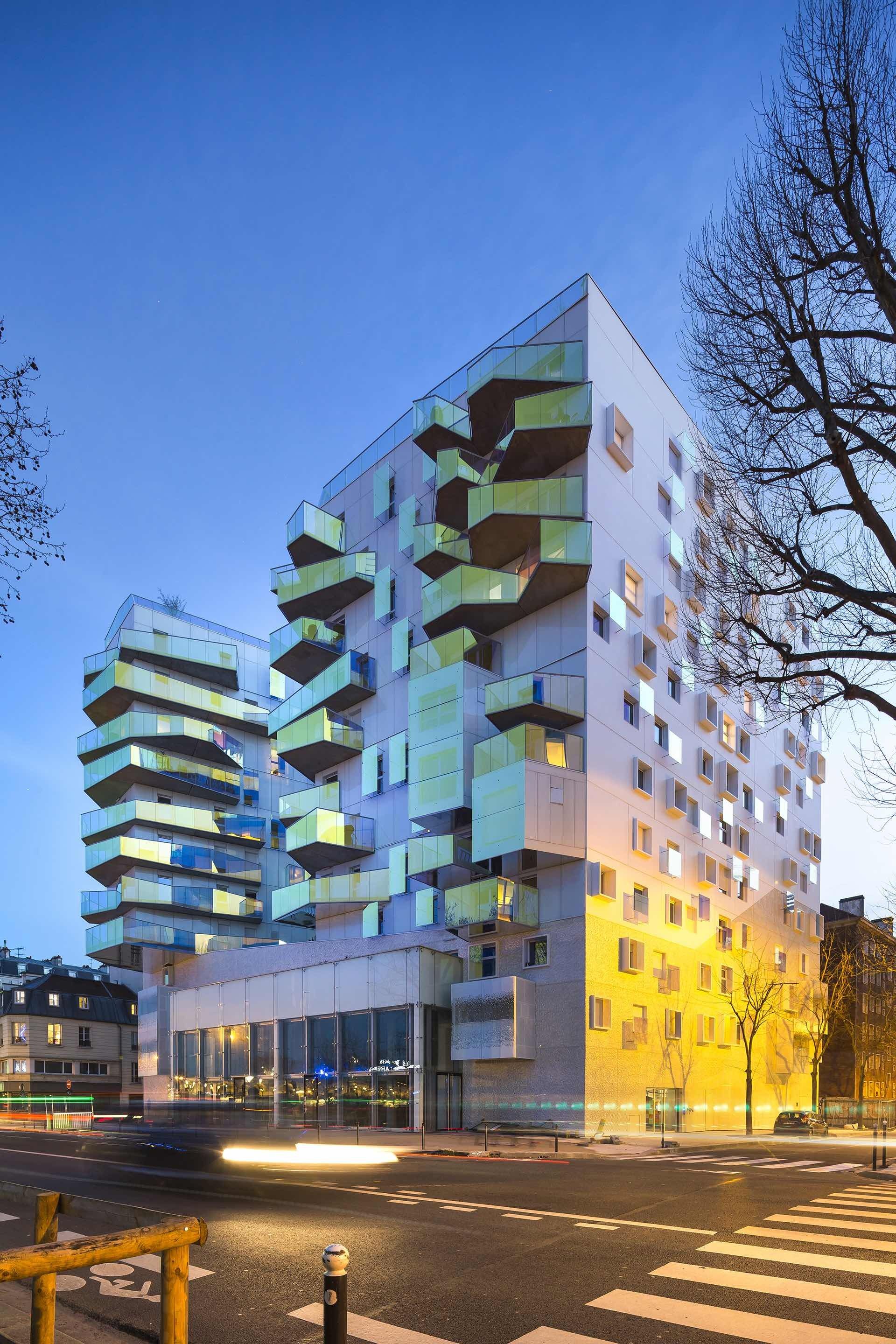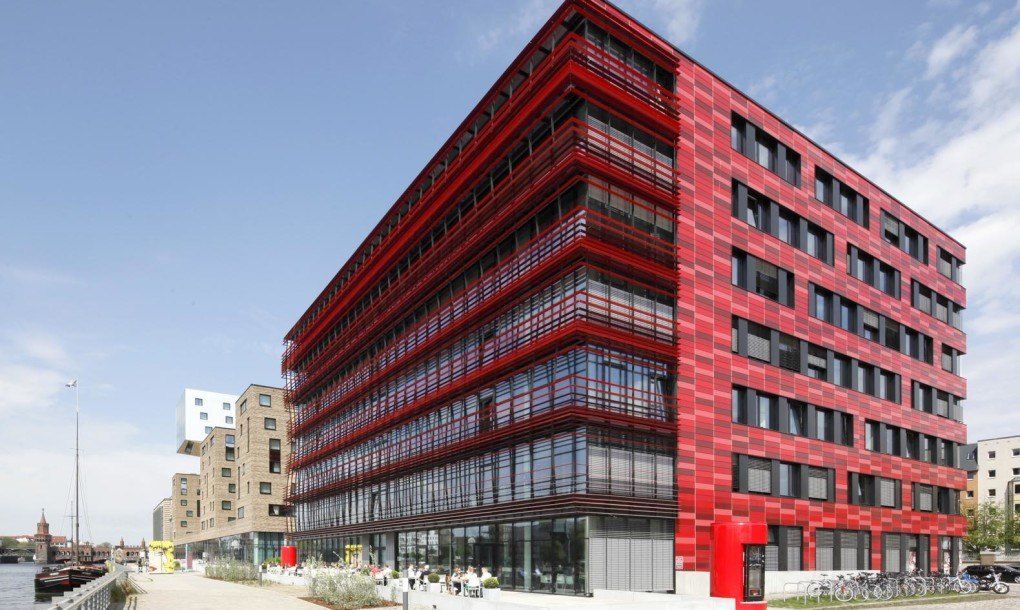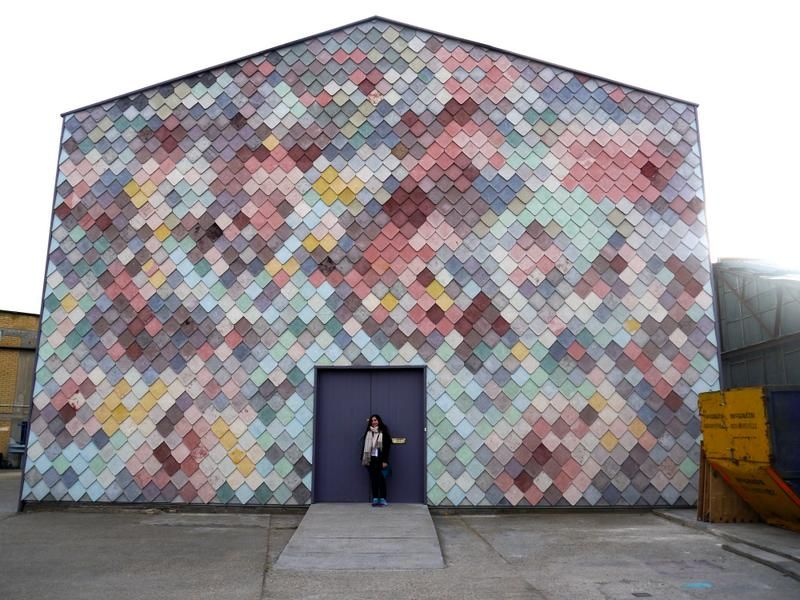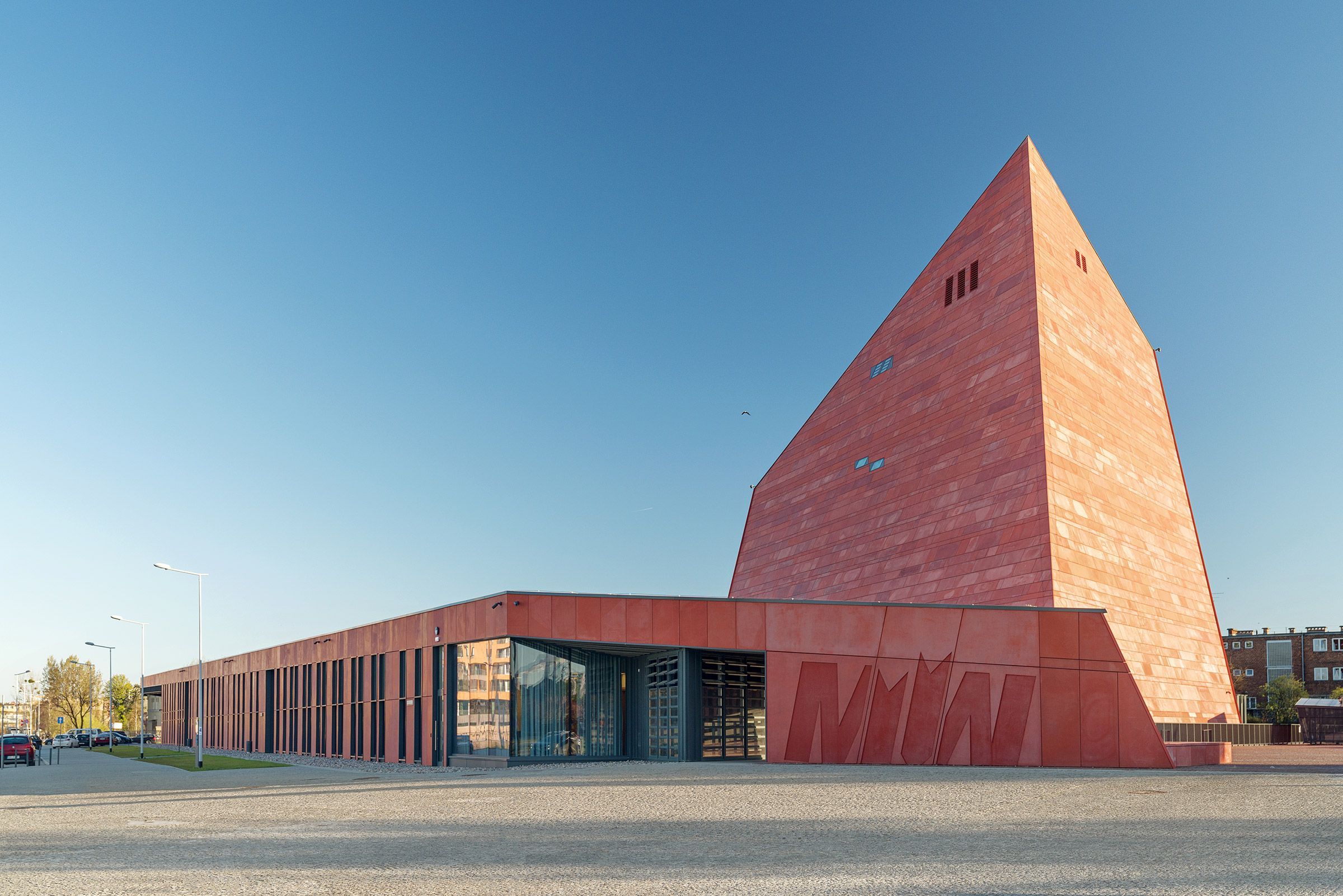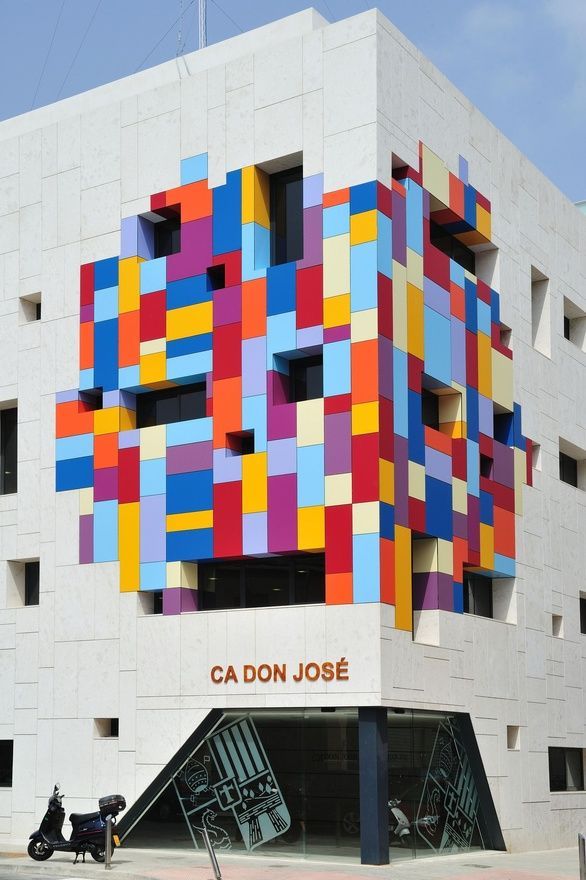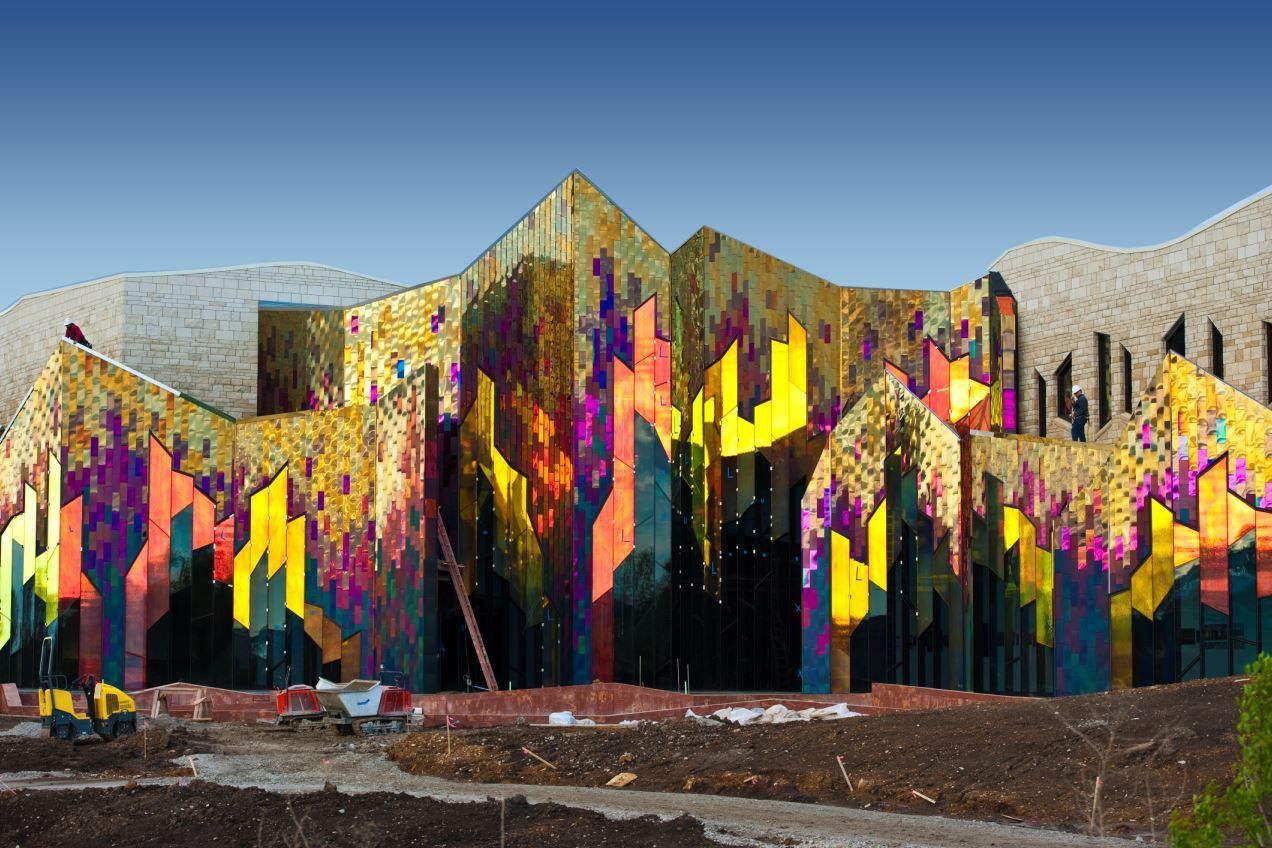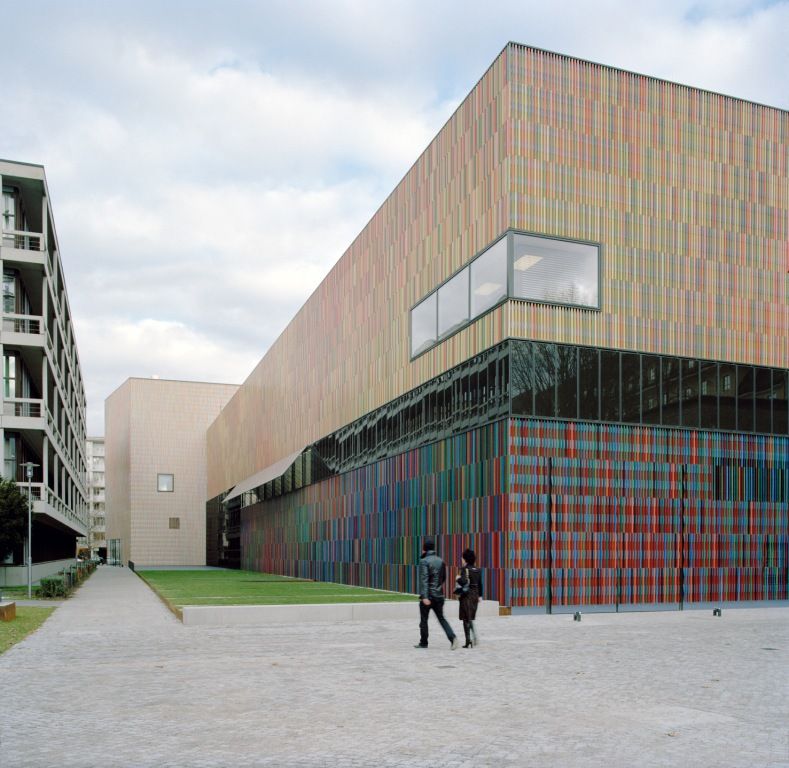You have most likely come upon a project of a kindergarten, a school, or a recreational center once before and thought that a touch of cheery colors on the facade would do it much good. However, what options do we have to introduce color to an architectural facade? By default, we think of the most basic, available, and seemingly economic material, and that is paint.
Paint has been advancing lately with new and better types of development every now and then, but is it good enough for your exterior facade? You have probably heard once or twice before that plain old paint on a facade makes the building look cheap and inelegant. But how else could you add a pleasant variety of colors to your facade? How to design an architectural elevation? Here, we will give you a list of materials that are available in a varied range of colors and which you can flexibly and fashionably use to clad your elevations
List of Materials for Your Architectural Facade:
1. Metal
Painted metal is one classy solution to the issue of color. Colored metal cladding panels come in various forms, and they are mostly manufactured from Aluminum or Stainless Steel. The panels are painted and coated with protective chemicals to keep them vivid and lustrous.
-
Mira Shopping Center in Munich, Germany – Chapman Taylor
Sometimes, instead of opting for plain solid panels, architects prefer to use aluminum mesh panels with tiny regular punctures. These panels give a semi-transparent effect to the architectural facade.
Triangular red metal panels envelop the entrance and terrace of this cultural center in Northwest France. These panels comprise frames of anodized steel beams and mesh, and they structure together a dynamic 3D skeleton to shelter the space within.
The Oasis Hotel in Singapore is clad, almost all-around, in mesh panels of various red shades. Creeping plants grow in between these panels, giving the whole edifice an exotic impression and referencing Singapore’s tropical location. Perforated metal panels don’t have to come in standard regular mesh-like forms. The perforations could be of any size and shape, and they could form a sort of a pattern or a figure to mark the facade and give it an aesthetic appeal.
The whole building is enveloped in a green aluminum perforated skin with sinuous patterns, to filter the incoming air and light. There are, also, these two oversized egg-like punctures in the main facade which reveal strips of solid green aluminum panels and glass.
There are other ways to obtain unique colors for cladding-metal other than artificial paint; like for example Oxidized Copper. Copper in its original state has a lustrous brownish tint which could look quite attractive on a facade. However, when oxidized under the effect of certain chemicals, it reveals a unique shade of green. This shade of green is known as the “patina”. One famous example that features a natural patina is the Statue of Liberty in New York.
-
Public Middle School Of Labarthe-Sur-Lèze in France – LCR Architectes
-
Stuckeman Family Building in Pennsylvania State University – Overland | WTW Architects
2. Glass
Colored glass is another option to enliven your architectural facade. Glass gains color when certain metals and metal oxides are added to it during its production. For example, Iron oxide gives the glass a bluish-green tint, while nickel gives it a blue, violet, or black tint, according to its concentration.
This building in Kayseri Turkey is home to an ice rink, and the designers aspired to reflect the activity inside on the facade by introducing colors. They decided to sell the building’s organic amorphous openings with colored glass, and the result is quite impressive. Colored glass sheets don’t have to reflect one color. You can opt for Dichroic glass which reflects various shades of color under different lighting conditions. This could give your architectural facade a playful dynamic effect.
The Fulton block in Paris showcases the variance in the reflected color of the dichroic glass, used for the balconies’ handrails, day and night, and from different angles.
3. Ceramic
Ceramic is quite appealing as pottery, but it is also popular as a flooring and wall-cladding material, especially for wet areas like bathrooms and kitchens. It has three main types: earthenware, stoneware, and porcelain. Terracotta is one form of ceramic that belongs to the earthenware family. It has been used since ancient times for sculptures, pots, decorative elements, and to give architectural facades a touch of red. An interesting modern application of Terracotta, in its glazed and non-glazed form, is the Coca-Cola Headquarters building in Berlin.
-
Coca-Cola Headquarters in Berlin, Germany – Tchoban Voss Architekten
Three of the building’s four elevations feature horizontal ceramic claddings colored in five Terracotta shades. These shades include Coca-Cola’s trademark red “Chinese Vermilion”, two shades lighter, and two shades darker. The two lighter shades are matt, while the rest is glossy, to show the cladding’s true colors and highlight the variation intones.
4. Concrete
Although concrete panels and tiles are remarkable for their cement-gray shade, they would still look good in colors. That was the case with the Yardhouse in London.
-
The Yardhouse in London, UK – Assemble
The Yardhouse showcases the beauty of concrete tiles when given various hues. The shingle-like tiles were handmade on-site and colored randomly in different pastel pigments. The outcome was this diverse yet harmonic and charming facade. While this might arguably count as paint, the final impression is certainly far more exquisite.
This museum in Poland utilizes colored concrete but in a different and more profound light. The whole building is enveloped in Terracotta-red concrete panels, while the main facade of its entrance building is fully glazed. The ensuing contrast between the solid red-tinged concrete and the transparent glass gives it an outstanding look.
5. Hybrids
If one material won’t work then you can use many. One way to do so is by combining two or more different materials in one facade. But, one step further is to combine these different materials in one, and that is what many manufacturers of architectural materials are doing now.
-
Cultural Centre Ca Don José in Spain – Hector Luengo Arquitectos
This cultural center in Spain features Lego-like colorful panels on its facade. These panels are made from High-Pressured Laminate (HPL) or what is known as Decorative Laminate. This laminate is composed of resins and fibers, which can be natural to a percentage.
Now, we get back to the first approach with this unusual shimmering facade. The architect combined multi-colored iridescent stainless steel tiles and dichroic glass to end up with a quite vibrant yet stylish facade that changes color at different times of the day.
-
Brandhorst Museum in Munich, Germany – Sauerbruch Hutton
Here, on the other hand, the architect achieves a playful trick of color, using both Terracotta and Aluminum. Red and blue horizontal aluminum sheets act as a backdrop for 36,000 ceramic rods that feature 23 different custom colors. The combination creates an animated effect under the sunlight and the colors seem pleasantly harmonious when viewed from afar. These were our suggestions for alternative materials which you can use to add color to your Architectural Facade other than paint. Surely, there are many other innovations out there. So, what have we missed? Tell us what else should be on our list.


